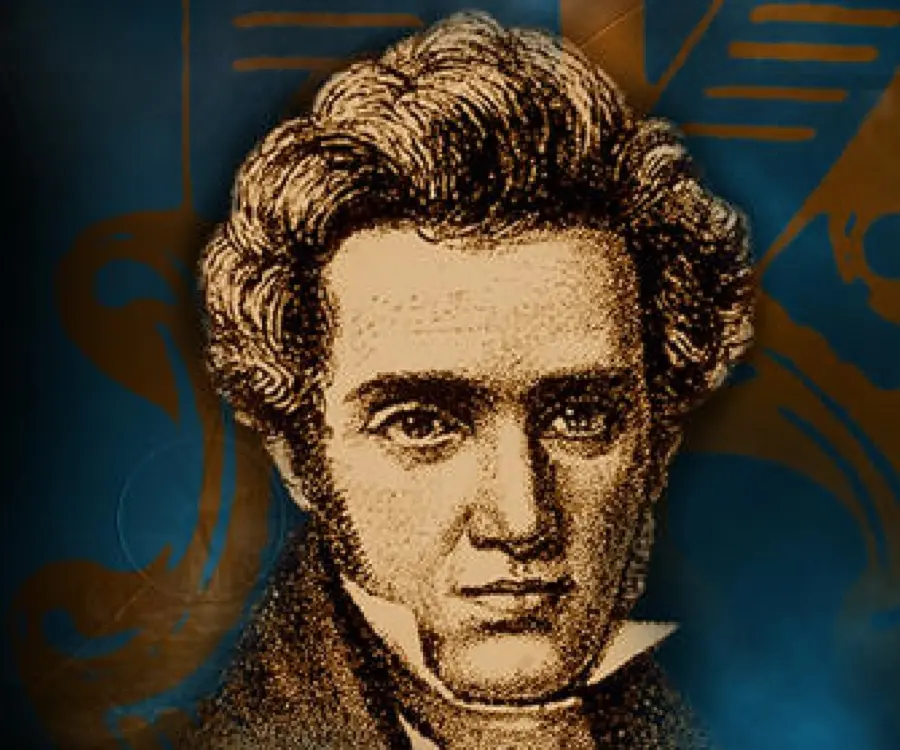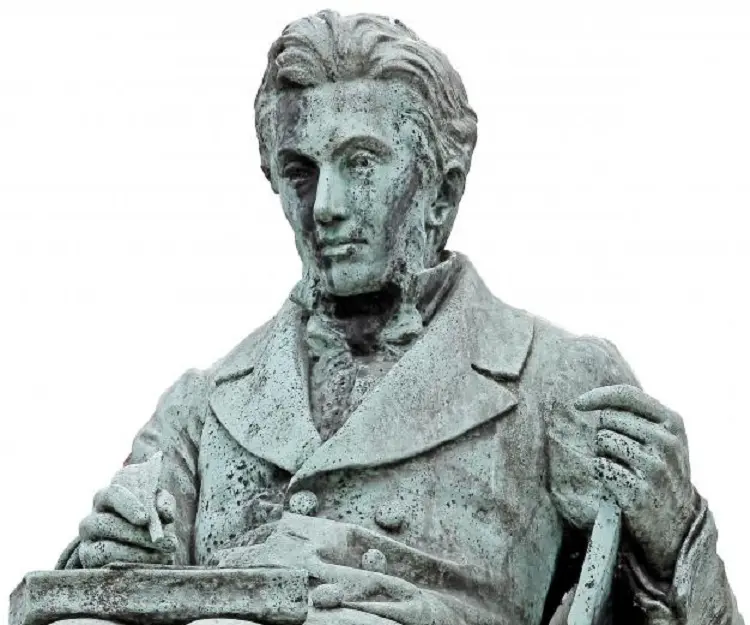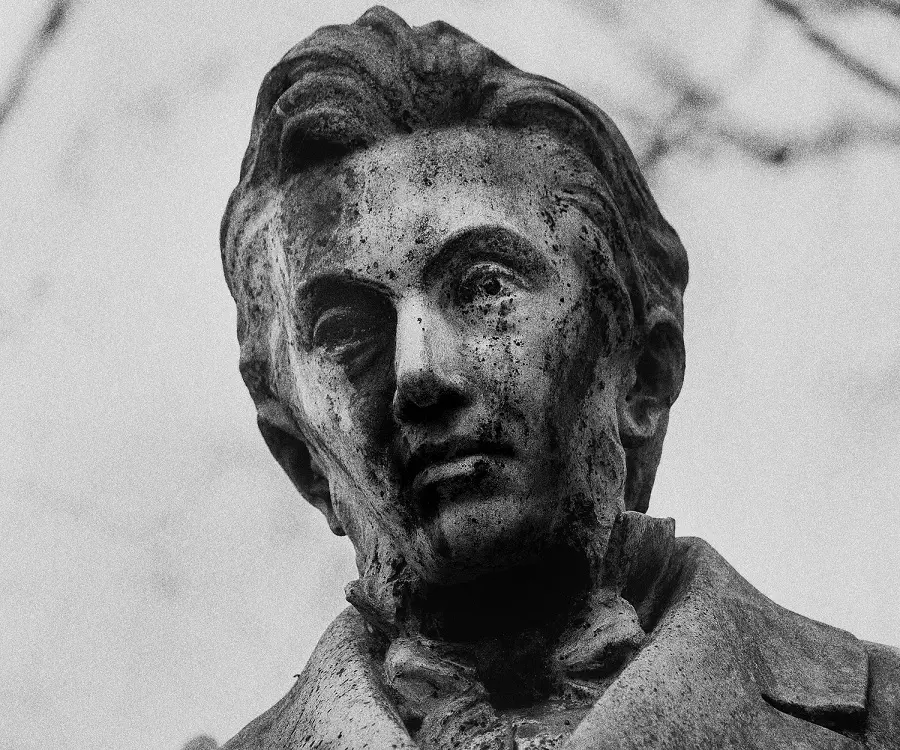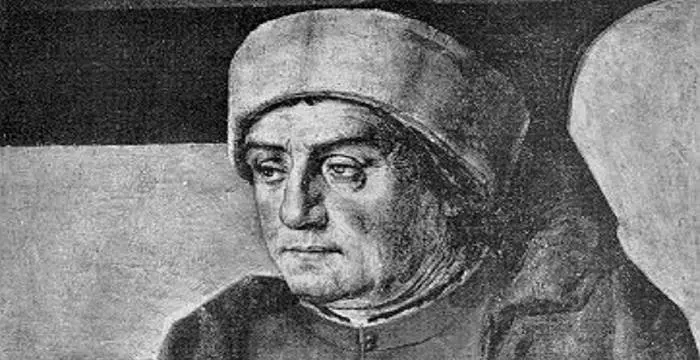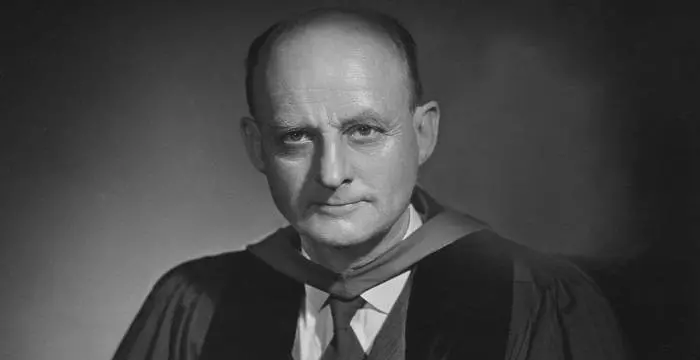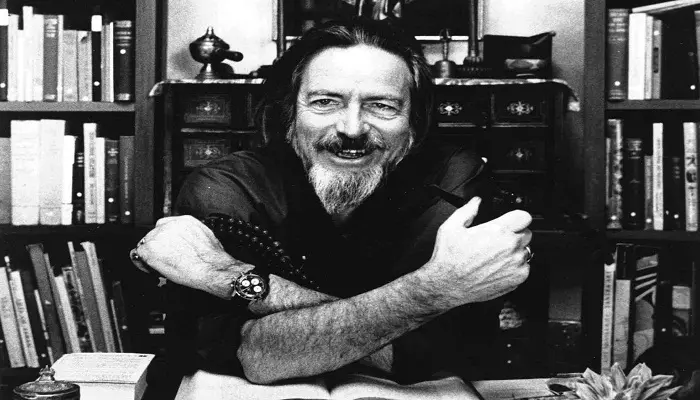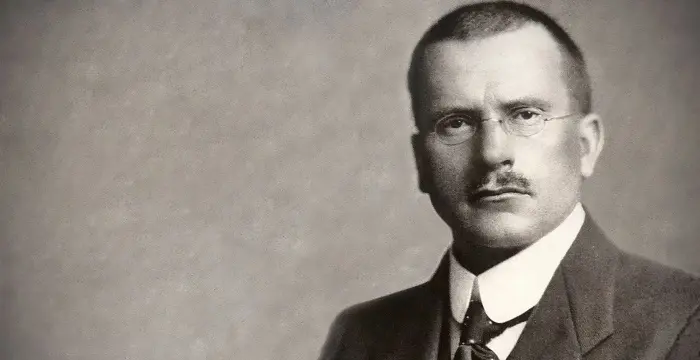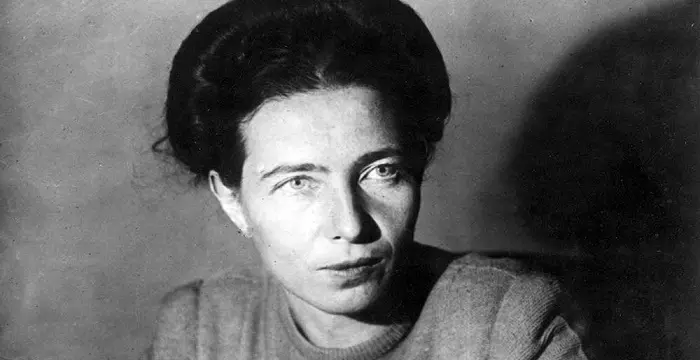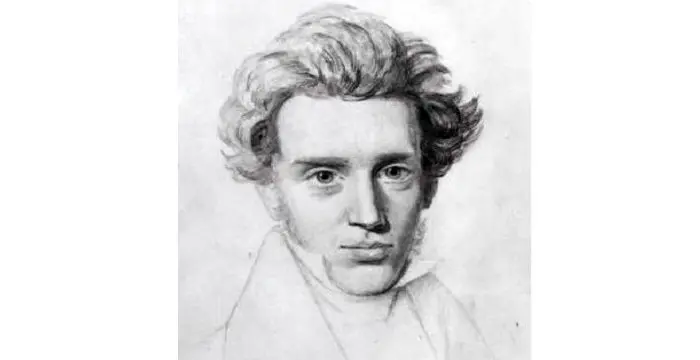
Soren Kierkegaard - Religious Author, Birthday and Family
Soren Kierkegaard's Personal Details
Soren Kierkegaard was a famous Danish philosopher who was known for his significant philosophical works
| Information | Detail |
|---|---|
| Birthday | May 5, 1813 |
| Died on | November 11, 1855 |
| Nationality | Danish |
| Famous | Intellectuals & Academics, Philosophers, Theologians, Religious Author |
| Siblings | Peter Christian Kierkegaard |
| Universities |
|
| Birth Place | Copenhagen |
| Gender | Male |
| Father | Michael Pedersen Kierkegaard |
| Mother | Ane Sørensdatter Lund Kierkegaard |
| Sun Sign | Taurus |
| Born in | Copenhagen |
| Famous as | Philosopher, Theologian & Religious Author |
| Died at Age | 42 |
Soren Kierkegaard's photo
Who is Soren Kierkegaard?
Soren Kierkegaard was a famous Danish philosopher, theologian and religious author. He was well known for his criticism of the philosophies of Georg Wilhelm Friedrich Hegel, Friedrich Wilhelm Joseph Schelling and Karl Wilhelm Friedrich Schlegel. His philosophical work generally deals with the issues of living as a “single individual” and giving priority to concrete human reality over abstract thinking. His work in theology focuses mainly on Christian ethics and institution of the Church. It also deals with the difference between the purely objective proofs of Christianity and a subjective relationship to Jesus Christ. Kierkegaard was also interested in human psychology and his psychological work explores the emotions and the feelings of individuals when facing situations in life. His intellectuality was influenced by Socrates and the Socratic Method. Kierkegaard’s earlier works were mainly written under various pseudonymous characters, presenting their own distinctive viewpoints and interacting with each other.
// Famous Intellectuals & Academics
Bertil Gotthard Ohlin
Bertil Gotthard Ohlin was a famous Swedish economist. This biography profiles his childhood, family life & achievements.
Emily Greene Balch
Emily Greene Balch was an American economist, sociologist and pacifist who won the 1946 Nobel Peace Prize. This biography of Emily Greene Balch provides detailed information about her childhood, life, achievements, works & timeline.
Martin Buber
One of the greatest philosophers to have ever walked on earth, Martin Buber contributions to philosophy is a long-standing one. Explore all about his profile, childhood, life and timeline here.
Biography detail
Soren Kierkegaard Childhood & Early Life
Soren Kierkegaard was born on 5th May, 1813 in an affluent family in Copenhagen. His father, Michael Pedersen Kierkegaard was a stern man with an ardent imagination. His mother, Ane Sorensdatter Lund Kierkegaard was a quiet, plain lady with no formal education. In 1830, he attended the School of Civic Virtue, Ostre Borgerdyd Gymnasium. In this school, Kierkegaard studied history and Latin among other subjects. He went to the University of Copenhagen to study theology but was reluctant to study historical works and philosophy. He didn’t want to be a traditional philosopher and was also not interested in preaching Christianity. On 8th May, 1837 he met Regine Olsen and the two were instantly attracted towards each other. He formally proposed her on September 8, 1840, but following his delusions about the prospects of marriage, he broke off the engagement on August 11, 1841. It was said that the two were mad in love but Kierkegaard considered his “melancholy” made him unsuitable for marriage. Still there was no clear reason for the abrupt end of the relationship. Later, Kierkegaard started concentrating in his examinations. On September 1841, he came up with, “On the Concept of Irony with Continual Reference to Socrates”, which the university panel considered thoughtful and noteworthy. This thesis dealt with the irony and Schelling's 1841 lectures and but was taken as too informal and witty for a serious academic thesis. Kierkegaard completed his graduation from university on October 20, 1841 with a Magister Artium which is now known as Ph.D.
Later Life & Works
Kierkegaard used pseudonyms to publish some of his works, whereas in others signed his own as author. For example, his first book, “De omnibus dubitandum est” was written in between 1841-42 was written under pseudonym, “Johannes Climacus”. Unfortunately this book was published only after his death. On February 20, 1843, Kierkegaard published “Either/Or” which was written during his stay in Berlin. His next publication “Two Upbuilding Discourses, 1843” was released under his own name. On October 16, 1843 he published his three books, among which “Three Upbuilding Discourses, 1843” was the only one written under his own name. The other two books namely “Fear and Trembling” and “Repetition” were published under pseudonyms Johannes de Silentio and Constantin Constantius respectively. The same year, he published another book, “Four Upbuilding Discourses, 1843” published under his own name. The following year in 1844, he published “Two Upbuilding Discourses, 1844”, and “Three Upbuilding Discourses, 1844” using his own name. The next book to come out was “Philosophical Fragments” written under the pseudonym Johannes Climacus. His next book, “The Concept of Anxiety” was published under two pseudonyms Vigilius Haufniensis, with a Preface, by Nicolaus Notabene. In the final book of the year, “Four Upbuilding Discourses, 1844” he used his own name.
In the early 1845, he published two books, “Three Discourses on Imagined Occasions”, under his own name and “Stages on Life's Way” which was edited by Hilarius Bookbinder. Kierkegaard then took a short break in Berlin. On his return, he published all his discourses from 1843-44 together in a volume, “Eighteen Upbuilding Discourses” on May 29, 1845. Following an article from Peder Ludvig Moller, contributor and editor of ‘The Corsair’, who in his article had questioned about the coherency of the works of Kierkegaard, to which the latter responded heavily. Kierkegaard published two small articles in his response. The first piece, “The Activity of a Traveling Esthetician” was focused on insulting Moller’s integrity while in the second piece; “Dialectical Result of a Literary Police Action” Kierkegaard criticized about The Corsair’s journalistic quality and reputation. This was followed by a series of mocking attacks by The Corsair on Kierkegaard’s appearance, voice and habits. Nevetheless, this didn’t have any effect on Kierkegaard who kept his habit of writing under pseudonyms intact. On February 27, 1846 Kierkegaard published “Concluding Unscientific Postscript to Philosophical Fragments”, under his first pseudonym, Johannes Climacus. His next book “Two Ages: A Literary Review”, was published under his own name.
After a gap of one year, Kierkegaard started writing again in 1847. “Edifying Discourses in Diverse Spirits” was his first work of this period and included, “Purity of Heart is to Will One Thing” and “Works of Love”. After knowing that the people were discussing about his status of Christianity upon his pseudonyms, he wrote “Concluding Unscientific Discourses” where he openly admitted to be the author of the books. In the year 1848, Kierkegaard published “Christian Discourses” under his own name and “The Crisis and a Crisis in the Life of an Actress” under the pseudonym Inter et Inter. The same year he wrote, “The Point of View of My Work as an Author” which was an autobiographical explanation of his use of pseudonyms. Unfortunately, this book couldn’t get published during his lifetime. The next year in 1849, Kierkegaard published the second edition of “Either/Or” and “The Lily of the Field and the Bird of the Air”. Later in the year, he published other books, “The Sickness Unto Death” under the pseudonym Anti-Climacus and “Three Discourses at the Communion on Fridays” under his own name. In 1850, Kierkegaard came up with “Practice in Christianity” which was published under the name Anti-Climacus. In his final years, he took a sustained, straightway attack on the Danish National Church by the help of newspaper articles published in The Fatherland (Fædrelandet) and a series of self-published pamphlets called “The Moment” (Ojeblikket).
Death
Before publishing the tenth issue of “The Moment”, Kierkegaard collapsed on the street and was taken to hospital. After staying in hospital for over a month, he died on November 11, 1855 .He was buried in the Assistens Kirkegård in the Norrebro section of Copenhagen.
// Famous Theologians
Meister Eckhart
Explore this biography to know the profile, childhood, life and timeline of Meister Eckhart, who brought in a great change in Germany with his groundbreaking thesis and ideas.
Anicius Manlius Severinus Boethius
Boethius was an early 6th century Roman senator and philosopher best known for his treatise ‘Consolation of Philosophy’. This biography of Boethius provides detailed information about his childhood, life, achievements, works & timeline.
Reinhold Niebuhr
Reinhold Niebuhr was a German-American theologian, intellectual and political commentator who wrote the famous book, ‘Moral Man and Immoral Society’. This biography provides information about his profile, childhood, life and timeline.
// Famous Philosophers
Martin Buber
One of the greatest philosophers to have ever walked on earth, Martin Buber contributions to philosophy is a long-standing one. Explore all about his profile, childhood, life and timeline here.
Lao Tzu (Laozi)
Lao Tzu was a legendary Chinese philosopher who wrote the important “Daodejing”. This biography profiles his childhood, life, career, achievements and timeline.
Alan Watts
Alan Watts was a famous British philosopher known for his Zen teachings and interpretations of Eastern philosophy. Read more about this great philosopher in the following article.
Carl Jung
Carl Jung was a Swiss psychiatrist famous for founding the school of analytical psychology. This biography of Carl Jung provides detailed information about his childhood, life, achievements, works & timeline.
Simone de Beauvoir
Simone de Beauvoir was an eminent French writer, intellectual, activist, and philosopher. This biography profiles her childhood, life, thoughts, achievements and timeline.
Jabir Ibn Hayyan
Jabir Ibn Hayyan was a medieval era polymath. Check out this biography to know about his life, works and achievements.
Soren Kierkegaard's FAQ
What is Soren Kierkegaard birthday?
Soren Kierkegaard was born at 1813-05-05
When was Soren Kierkegaard died?
Soren Kierkegaard was died at 1855-11-11
Where was Soren Kierkegaard died?
Soren Kierkegaard was died in Frederiks Hospital
Which age was Soren Kierkegaard died?
Soren Kierkegaard was died at age 42
Where is Soren Kierkegaard's birth place?
Soren Kierkegaard was born in Copenhagen
What is Soren Kierkegaard nationalities?
Soren Kierkegaard's nationalities is Danish
Who is Soren Kierkegaard siblings?
Soren Kierkegaard's siblings is Peter Christian Kierkegaard
What was Soren Kierkegaard universities?
Soren Kierkegaard studied at University of Copenhagen
Who is Soren Kierkegaard's father?
Soren Kierkegaard's father is Michael Pedersen Kierkegaard
Who is Soren Kierkegaard's mother?
Soren Kierkegaard's mother is Ane Sørensdatter Lund Kierkegaard
What is Soren Kierkegaard's sun sign?
Soren Kierkegaard is Taurus
How famous is Soren Kierkegaard?
Soren Kierkegaard is famouse as Philosopher, Theologian & Religious Author
